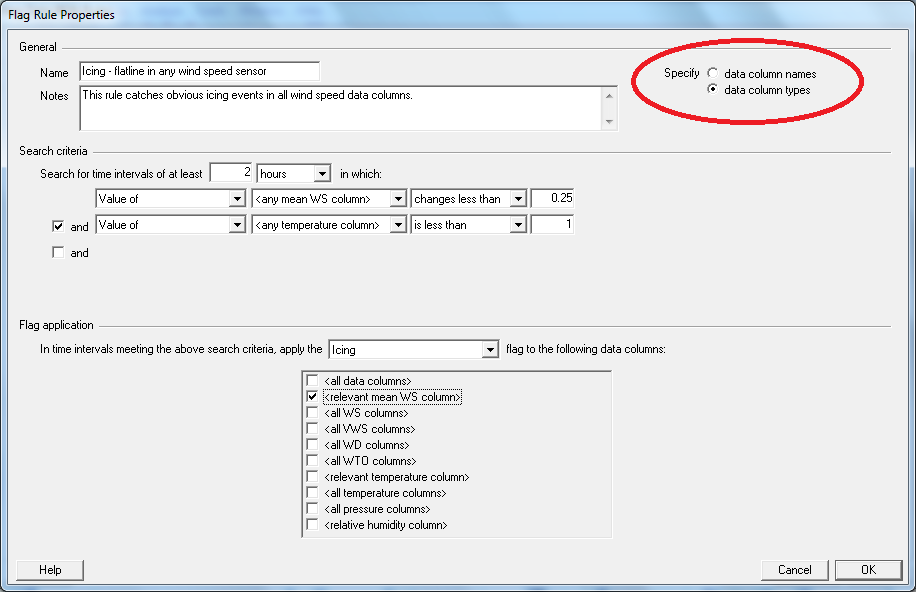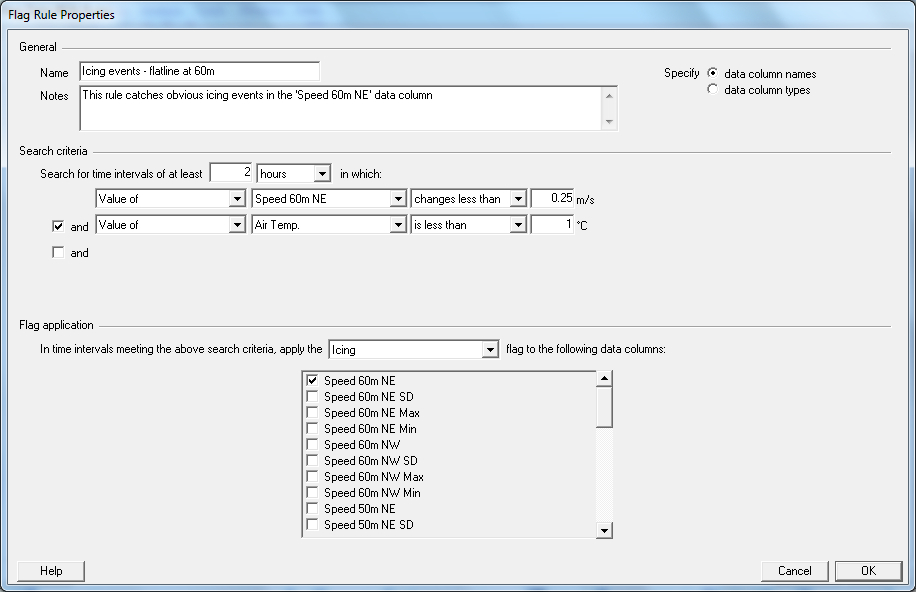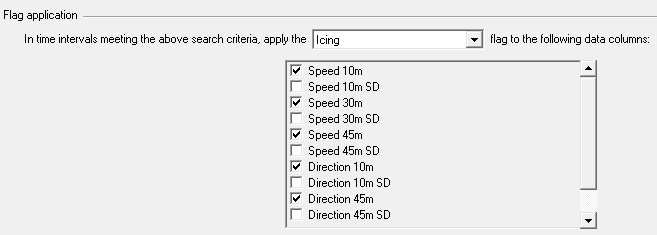
| Using Flag Rules Across Multiple Datasets |  |
Using Windographer's favorite flag rules mechanism, you can easily take a flag rule that you created for one dataset and use it in another dataset, or even use it in every dataset you analyze. (For more information please refer to the article on sharing flag rules.) But what happens if the flag rule refers to a data column that doesn't exist in the current dataset? This article aims to answer that question.
First, recall that when you create a flag rule, you can choose whether it refers to specific data column names or to data column types . You make this choice in the top right corner of the Flag Rule Properties window, highlighted in the screenshot below:

Whether it refers to data column names or types, you can add a flag rule to your list of favorites and use it in multiple datasets. But rules that refer to data column types are more flexible because they do not require any particular data column names. They will work for any dataset that contains data columns of that type, regardless of the how the data columns are named.
The flag rule that appears in the screenshot above, for example, will work for any dataset that contains one or more temperature data columns and one or more wind speed data columns. By contrast, the one that appears in the screenshot below can be used only in datasets that contain a data column named 'Speed 60m NE' and another named 'Air Temp.'

Note that both of these flag rules appear in the article on flag rule examples.
For a flag rule to apply to a particular dataset, that data must contain all of the data columns referred to by the rule's search criteria, and at least one of the data columns referred to by the rule's flag application settings.
For example, if you created a flag rule with the search criteria shown in the screenshot below, you could use that flag rule only on datasets that contained data columns named 'Speed 60m NE' and 'Speed 60m NW'. Windographer could not otherwise determine whether a data segment met your search criteria.

Similarly, a flag rule with the search criteria shown in the screenshot below could apply only to datasets containing one or more temperature data columns and one or more standard-deviation-of-wind-direction data columns.

The flag application settings have less rigid requirements in that they can work even if the dataset contains only some of the data columns to which they refer. For example, if you created a flag rule with the flag application settings shown in the screenshot below, you could use that flag rule on any dataset that contained any one of the five checked data columns. Windographer would simply apply to the flag to whichever of the five that did exist in the dataset, and it would ignore the others.

Similarly, a flag rule with the flag application settings shown in the screenshot below would work on any dataset containing either a wind speed data column, a temperature data column, or an air pressure data column. If the data set contained wind speed and temperature columns, but no air pressure column, Windographer would simply apply the flag to the wind speed and temperature columns in any time interval caught by the search criteria. The lack of an air pressure column would not prevent Windographer from executing the flag rule.

See also
Favorite Flag Rules definition